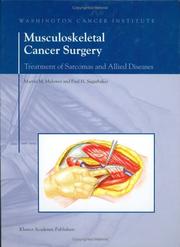| Listing 1 - 10 of 18 | << page >> |
Sort by
|
Book
ISBN: 9087224842 Year: 2018 Publisher: Amsterdam, The Netherlands : IBFD,
Abstract | Keywords | Export | Availability | Bookmark
 Loading...
Loading...Choose an application
- Reference Manager
- EndNote
- RefWorks (Direct export to RefWorks)
Book
ISBN: 9020110772 Year: 1978 Volume: vol 62 Publisher: Deventer : Kluwer Technische Boeken,
Abstract | Keywords | Export | Availability | Bookmark
 Loading...
Loading...Choose an application
- Reference Manager
- EndNote
- RefWorks (Direct export to RefWorks)
Book
ISBN: 9789087224837 9789087224844 9789087224851 9087224850 9087224834 Year: 2018 Publisher: Amsterdam IBFD
Abstract | Keywords | Export | Availability | Bookmark
 Loading...
Loading...Choose an application
- Reference Manager
- EndNote
- RefWorks (Direct export to RefWorks)
International finance --- International law --- Tax law --- European Union --- China --- Investments, Foreign (International law) --- Tax sparing --- Double taxation --- Foreign tax credit --- International investment law --- Investment law, International --- E-books
Book
ISBN: 0128196688 0128199032 9780128199039 9780128196687 Year: 2020 Publisher: London, United Kingdom
Abstract | Keywords | Export | Availability | Bookmark
 Loading...
Loading...Choose an application
- Reference Manager
- EndNote
- RefWorks (Direct export to RefWorks)
"Drug Repurposing in Cancer Therapy: Approaches and Applications provides comprehensive and updated information from experts in basic science research and clinical practice on how existing drugs can be repurposed for cancer treatment. The book summarizes successful stories that may assist researchers in the field to better design their studies for new repurposing projects. Sections discuss specific topics such as in silico prediction and high throughput screening of repurposed drugs, drug repurposing for overcoming chemoresistance and eradicating cancer stem cells, and clinical investigation on combination of repurposed drug and anticancer therapy"--Publisher's description.
Cancer --- Off-label drug use. --- Drug Repositioning --- Neoplasms --- Off-Label Use --- Chemotherapy. --- methods --- drug therapyd0http://id.nlm.nih.gov/mesh/D009369Q000188. --- Off-Label Use. --- methods. --- drug therapy. --- Antineoplastic agents --- Treatment --- Extra-label drug use --- Off-label prescribing --- Drug utilization --- Drugs --- Prescribing --- Dose-Sparing Drug Use --- Fractional Dose Drug Use --- Off-Label Prescribing --- Reduced-Dose Drug Use --- Unlabeled Indication --- Dose Sparing Drug Use --- Dose-Sparing Drug Uses --- Indication, Unlabeled --- Off Label Prescribing --- Off Label Use --- Off-Label Prescribings --- Off-Label Uses --- Prescribing, Off-Label --- Reduced Dose Drug Use --- Reduced-Dose Drug Uses --- Unlabeled Indications --- Drug Labeling
Book
ISBN: 3319179187 3319179179 Year: 2019 Publisher: Cham, Switzerland : Springer,
Abstract | Keywords | Export | Availability | Bookmark
 Loading...
Loading...Choose an application
- Reference Manager
- EndNote
- RefWorks (Direct export to RefWorks)
This book provides a practical guide to the treatment of patients as risk from limb amputation. The most common presentations of the diabetic foot are presented in concise and evidence-based chapters covering the neuropathic foot, the Charcot foot, the ischemic foot, and the infected foot. Each section includes an introduction to the clinical approach as well as an algorithm illustrating the limb salvage pathway and intervention steps. Limb Salvage of the Diabetic Foot: An Interdisciplinary Approach aims to help the reader build an interdisciplinary understanding of the diabetic foot and its treatment and is of interest to all members of the interdisciplinary diabetic foot team including surgeons, podiatrists, radiologists, nurses, orthotists, infectious disease physicians, and endocrinologists.
Endocrinology. --- Surgery. --- Surgery, Primitive --- Medicine --- Internal medicine --- Hormones --- Endocrinology . --- Diabetes --- Limb salvage. --- Complications. --- Limb-saving surgery --- Limb-sparing surgery --- Salvage of limbs --- Extremities (Anatomy) --- Therapeutics, Surgical --- Surgery --- Complications and sequelae

ISBN: 1280005874 9786610005871 9264162437 9264160221 Year: 1998 Publisher: Paris : OECD Publishing,
Abstract | Keywords | Export | Availability | Bookmark
 Loading...
Loading...Choose an application
- Reference Manager
- EndNote
- RefWorks (Direct export to RefWorks)
Tax sparing provisions have now more than four decades of history in bilateral tax treaties, including treaties between OECD countries. But the world of today is quite different from that when the positions of OECD Member and non-member countries towards tax sparing were developed. These changes in the international setting have led countries to reconsider their attitude towards tax sparing and the design of such provisions. This report examines the practices of Member countries and explains why Member countries have become more reluctant to grant tax sparing in treaties. It also provides a number of suggested "best practices" on the design of tax sparing provisions in tax treaties.
Taxation --- Double taxation --- Tax sparing --- Tax incentives --- Law - Non-U.S. --- Law, Politics & Government --- Law - Europe, except U.K. --- Treaties --- Incentives, Tax --- Tax subsidies --- Double taxation conventions --- Gifts --- Income tax --- Inheritance and transfer tax --- Tax treaties --- Tax expenditures --- Foreign tax credit

ISBN: 1280462345 9786610462346 0306484072 0792363949 Year: 2004 Publisher: New York : Kluwer Academic Publishers,
Abstract | Keywords | Export | Availability | Bookmark
 Loading...
Loading...Choose an application
- Reference Manager
- EndNote
- RefWorks (Direct export to RefWorks)
Steven A. Rosenberg, MD In the past two decades significant progress has quality of life. The use of local radiation therapy has occurred, in the management of patients with mus- had a profound impact on the ability to achieve local loskeletal cancers, that has improved both the survival control. Cooperation between surgeons and radiation and the quality of life of afflicted patients. Changes in therapists often results in the tailoring of surgical p- the management of these patients have mirrored cedures to maximize the combined application of these trends in the entire field of oncology. two effective treatment modalities. Although impact on The most significant change has been improvement overall survival has not been demonstrated due to the in the surgical techniques for the resection of musculo- addition of radiation therapy, important advances in skeletal cancers based on a detailed understanding of improving the quality of life of patients receiving this the anatomic features of each particular tumor site, as combined-modality treatment have been evident. well as an appreciation of the natural biology that affects A third change impacting on the survival of patients the local spread of these tumors. The current volume of with musculoskeletal cancers has been the aggressive Musculoskeletal Cancer Surgery: Treatment of Sarcomas and resection of metastatic deposits.
Musculoskeletal system --- Sarcoma --- Muscles --- Soft tissue tumors --- Cancer --- Surgery. --- Orthopedics. --- Surgical oncology. --- Oncology . --- Surgical Oncology. --- General Surgery. --- Pediatric Surgery. --- Oncology. --- Pediatric surgery. --- Tumors --- Pediatric surgery --- Surgery, Pediatric --- Children --- Surgery, Primitive --- Medicine --- Oncologic surgery --- Oncological surgery --- Surgical oncology --- Orthopaedics --- Orthopedia --- Surgery --- Diseases --- Treatment --- Excision --- Limb salvage. --- Limb-saving surgery --- Limb-sparing surgery --- Salvage of limbs --- Extremities (Anatomy) --- Therapeutics, Surgical
Book
Year: 2020 Publisher: Basel, Switzerland MDPI - Multidisciplinary Digital Publishing Institute
Abstract | Keywords | Export | Availability | Bookmark
 Loading...
Loading...Choose an application
- Reference Manager
- EndNote
- RefWorks (Direct export to RefWorks)
Bladder cancer is the second most common genitourinary malignancy, with 81,190 estimated new diagnoses in 2018, in the United States alone. Transurethral resection of the bladder and radical cystectomy with bilateral pelvic lymph node dissection constitute the standard treatment for non-muscle invasive or very high-risk non-muscle invasive bladder cancer, respectively. However, survival expectations have not shown to improve in the last 20 years, and new diagnostic and therapeutic tools are urgently needed to improve the outcomes of this potentially lethal disease.
Medicine --- bladder cancer --- robotic-assisted --- open --- radical cystectomy --- survival --- propensity score --- age --- urothelial carcinoma --- outcome --- anesthesia recovery periods --- cognitive impairment --- gamma-cyclodextrins --- neuromuscular blockade --- robotic radical cystectomy --- glycogen --- clear-cell adenocarcinoma --- urinary bladder --- SEER program database --- female --- intracorporeal neobladder --- outcomes --- robotic --- sex-sparing --- methylation --- biomarkers --- FOXA1 --- GATA3 --- KRT20 --- molecular markers --- mRNA --- muscle-invasive bladder cancer --- PCR --- human epidermal growth factor receptor 2 --- indoleamine 2,3-dioxygenase --- programmed death ligand-1 --- immunotherapy --- nodal disease --- pN1 --- neoadjuvant --- adjuvant --- chemotherapy --- bladder cancer --- robotic-assisted --- open --- radical cystectomy --- survival --- propensity score --- age --- urothelial carcinoma --- outcome --- anesthesia recovery periods --- cognitive impairment --- gamma-cyclodextrins --- neuromuscular blockade --- robotic radical cystectomy --- glycogen --- clear-cell adenocarcinoma --- urinary bladder --- SEER program database --- female --- intracorporeal neobladder --- outcomes --- robotic --- sex-sparing --- methylation --- biomarkers --- FOXA1 --- GATA3 --- KRT20 --- molecular markers --- mRNA --- muscle-invasive bladder cancer --- PCR --- human epidermal growth factor receptor 2 --- indoleamine 2,3-dioxygenase --- programmed death ligand-1 --- immunotherapy --- nodal disease --- pN1 --- neoadjuvant --- adjuvant --- chemotherapy
Book
Year: 2020 Publisher: Basel, Switzerland MDPI - Multidisciplinary Digital Publishing Institute
Abstract | Keywords | Export | Availability | Bookmark
 Loading...
Loading...Choose an application
- Reference Manager
- EndNote
- RefWorks (Direct export to RefWorks)
Bladder cancer is the second most common genitourinary malignancy, with 81,190 estimated new diagnoses in 2018, in the United States alone. Transurethral resection of the bladder and radical cystectomy with bilateral pelvic lymph node dissection constitute the standard treatment for non-muscle invasive or very high-risk non-muscle invasive bladder cancer, respectively. However, survival expectations have not shown to improve in the last 20 years, and new diagnostic and therapeutic tools are urgently needed to improve the outcomes of this potentially lethal disease.
Medicine --- bladder cancer --- robotic-assisted --- open --- radical cystectomy --- survival --- propensity score --- age --- urothelial carcinoma --- outcome --- anesthesia recovery periods --- cognitive impairment --- gamma-cyclodextrins --- neuromuscular blockade --- robotic radical cystectomy --- glycogen --- clear-cell adenocarcinoma --- urinary bladder --- SEER program database --- female --- intracorporeal neobladder --- outcomes --- robotic --- sex-sparing --- methylation --- biomarkers --- FOXA1 --- GATA3 --- KRT20 --- molecular markers --- mRNA --- muscle-invasive bladder cancer --- PCR --- human epidermal growth factor receptor 2 --- indoleamine 2,3-dioxygenase --- programmed death ligand-1 --- immunotherapy --- nodal disease --- pN1 --- neoadjuvant --- adjuvant --- chemotherapy --- n/a
Book
Year: 2020 Publisher: Basel, Switzerland MDPI - Multidisciplinary Digital Publishing Institute
Abstract | Keywords | Export | Availability | Bookmark
 Loading...
Loading...Choose an application
- Reference Manager
- EndNote
- RefWorks (Direct export to RefWorks)
Bladder cancer is the second most common genitourinary malignancy, with 81,190 estimated new diagnoses in 2018, in the United States alone. Transurethral resection of the bladder and radical cystectomy with bilateral pelvic lymph node dissection constitute the standard treatment for non-muscle invasive or very high-risk non-muscle invasive bladder cancer, respectively. However, survival expectations have not shown to improve in the last 20 years, and new diagnostic and therapeutic tools are urgently needed to improve the outcomes of this potentially lethal disease.
bladder cancer --- robotic-assisted --- open --- radical cystectomy --- survival --- propensity score --- age --- urothelial carcinoma --- outcome --- anesthesia recovery periods --- cognitive impairment --- gamma-cyclodextrins --- neuromuscular blockade --- robotic radical cystectomy --- glycogen --- clear-cell adenocarcinoma --- urinary bladder --- SEER program database --- female --- intracorporeal neobladder --- outcomes --- robotic --- sex-sparing --- methylation --- biomarkers --- FOXA1 --- GATA3 --- KRT20 --- molecular markers --- mRNA --- muscle-invasive bladder cancer --- PCR --- human epidermal growth factor receptor 2 --- indoleamine 2,3-dioxygenase --- programmed death ligand-1 --- immunotherapy --- nodal disease --- pN1 --- neoadjuvant --- adjuvant --- chemotherapy --- n/a
| Listing 1 - 10 of 18 | << page >> |
Sort by
|

 Search
Search Feedback
Feedback About UniCat
About UniCat  Help
Help News
News